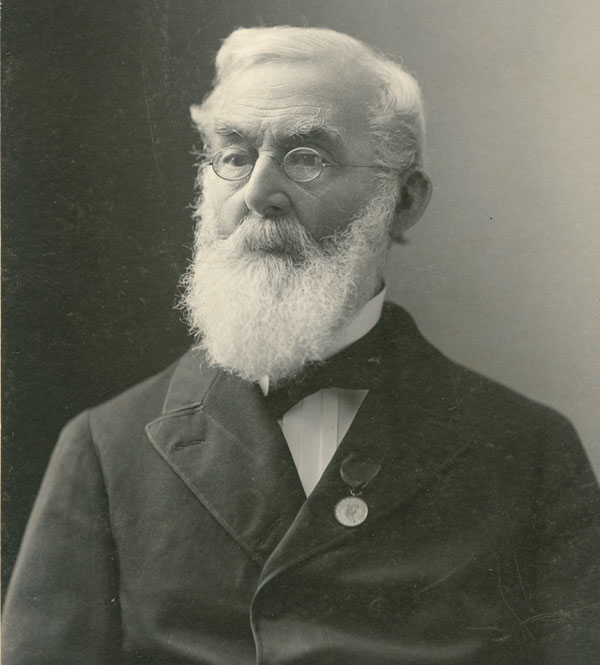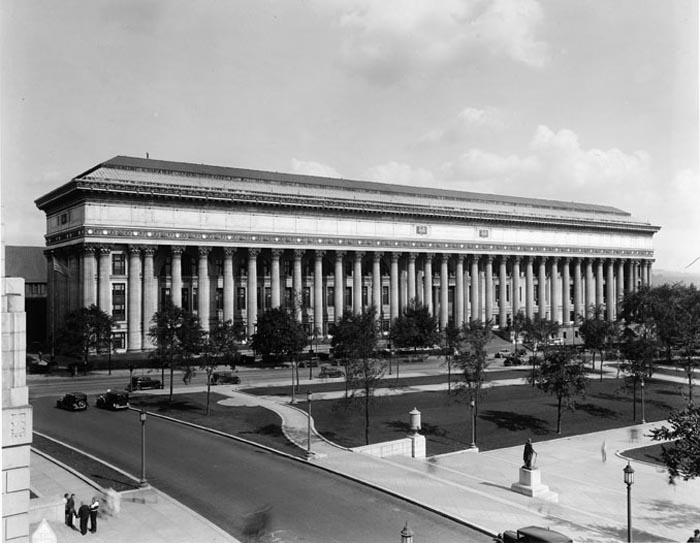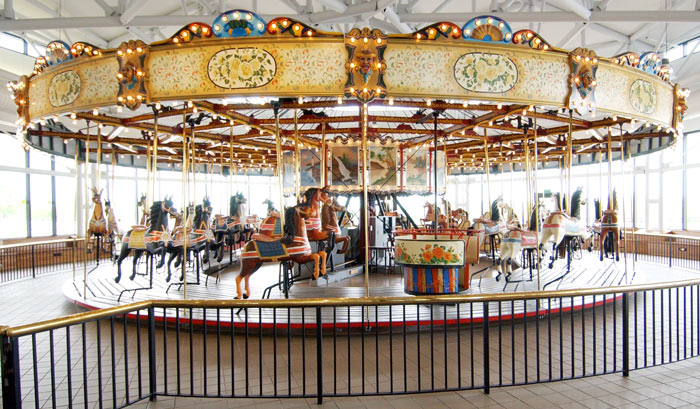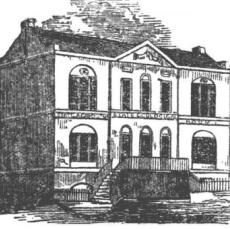Our history of inquiry, discovery, and education began in 1836 when we were established as the New York State Geological and Natural History Survey. Over the years, we have grown into a major research and educational institution dedicated to preserving New York's rich artistic, social, historical, and environmental legacies under the leadership of the New York State Education Department.
On April 15, 1836, Governor William Marcy appointed the staff of the state's first official Geological and Natural History Survey to conduct “a grand and comprehensive collection of the natural productions of the State of New York to exhibit under one roof its animal, mineral and vegetable wealth”. With that appointment, the story of the State Museum officially began.
Crates and barrels of fossils, rocks, and mineral specimens collected during the Survey eventually filled three rooms in Old State Hall. In an effort to end confusion over the status of the collections which sat unstudied and disorganized for seven years, the Legislature created the “State Cabinet of Natural History” in 1843. In 1845, the Legislature placed the Cabinet under the guidance of the Board of Regents. That year, the Cabinet opened its doors to the public.
The Old State House was the first official depository for the collections of the State Cabinet of Natural History from 1842 to 1855. Constructed from 1797-1799 at an estimated cost of $10,000, the brick building was four-stories high, situated between State Lodge Streets. Most notably, Old State Hall was the first public building erected by New York State Government in Albany after the Revolution. It originally housed the State departments—Secretary of State, Comptroller, State Treasurer, Attorney General and the Executive Chamber—until the newly constructed Capitol opened in 1808. Any remaining state offices moved to the New State Hall, built in 1842, and the State Cabinet was then placed in this building as recommended by Governor Seward. The Hall was demolished in 1855.
Within ten years, the Cabinet had amassed more collections than Old State Hall could accommodate. Upon completion in 1857, Geological and Agricultural Hall became the State Cabinet's headquarters and the focus shifted from housing a collection of objects to regarding the museum as “living organization”.
On May 2, 1870, the State Cabinet of Natural History was deemed by Legislature to be "a museum of scientific and practical geology and general natural history" and its name was officially changed to "The New York State Museum of Natural History." James Hall, who held the title of both State Geologist and State Paleontologist, was appointed as the Museum's first director.

James Hall, first director of the New York State Museum.
On March 29, 1911, fire broke out in the Capitol. From the Assembly Library, it spread to the State Library near several museum displays on temporary exhibit. Of 10,000 archaeological artifacts and ethnographic objects, only about 1,500 were recovered, most of which were damaged.
In 1912, the Museum moves into the newly constructed State Education Building. Although open to the public in 1915, a dedication ceremony hosted by former President Theodore Roosevelt was held on December 29, 1916. "A museum of this character," he stated, "has more than one function to fulfill. It must present to the people as a whole in vivid and yet truthful form, knowledge of the natural objects of our countryside…in such a fashion as to be readily understood."

New York State Education Building.
Over the next several decades, the Museum continues to expand and outgrows its space in the State Education Building. In 1962, the Legislature approved the construction of a 98.5 acre governmental park proposed by Nelson Rockefeller in the heart of downtown Albany – The Empire State Plaza. Included in the proposal were plans for a new Museum building. The 11-story, 1.5 million square foot Cultural Education Center was completed in 1976 and today houses the State Museum, State Library, and State Archives.
Over the next several years, the Museum opens several important galleries and exhibitions including Native Peoples of New York Hall, Great Art Series, the Carousel, the World Trade Center exhibition, and South Street Seaport.
Today, the New York State Museum is one of the largest tourist attractions in the Capital Region welcoming approximately half a million visitors annually. The Museum’s collections include over 20 million specimens and artifacts that reflect over 170 years of research in the earth sciences, biology and human history. Over 100,000 square feet of exhibition space gives visitors an opportunity to learn more about New York State’s natural, cultural and human history. Free public programs – for children, families and adults – are offered throughout the year.

The Carousel on the Fourth Floor of the Museum.



